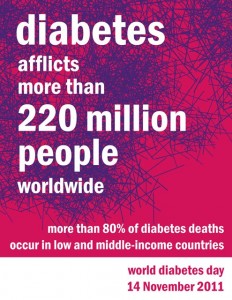 Welcome to our latest discussion blog on diabetes. In this blog we are looking at how people with Type 2 Diabetes can use diet and exercise to keep their condition under control.
Welcome to our latest discussion blog on diabetes. In this blog we are looking at how people with Type 2 Diabetes can use diet and exercise to keep their condition under control.
As with all of our blogs of this type we need your help. The objective of this diabetes blog is to allow people with diabetes or their loved ones to share top tips regarding diet and exercise for people with diabetes. In this blog we are focusing on Type Two Diabetes but will look more closely at Type One Diabetes at a later date.
With the increase in prevalence of diabetes throughout the world more attention is being paid to both prevention and non-medication based treatments of Type 2 Diabetes.
Diabetes UK (http://www.diabetes.co.uk/exercise-for-diabetics.html) has some excellent suggestions as to diet and exercise for diabetics and we strongly recommend that you pay their web site a visit.
Looking at their advice there are two key points worth mentioning:-
a) Three square meals a day – (don’t skip). Remember breakfast is an important meal!
b) It is certainly worth consulting a dietician. As with many medical conditions there really is no such thing as “one size fits all” so getting tailor made advice about diet is pretty important.
Overall the recommendations are, as with many diets, to focus on overall health eating. Typically a low glycaemic diet is recommended. This is a diet where weight loss is achieved by control of blood sugars. That is making sure that blood sugars do not “spike” during the day. This is achieved by eating food which has a low glycaemic index i.e. slow release. The sorts of foods that are low GI include whole grains, beans and lentils, pasta, fruit and sweet corn.
low glycaemic diet is recommended. This is a diet where weight loss is achieved by control of blood sugars. That is making sure that blood sugars do not “spike” during the day. This is achieved by eating food which has a low glycaemic index i.e. slow release. The sorts of foods that are low GI include whole grains, beans and lentils, pasta, fruit and sweet corn.
My wife (while not a diabetic) has used a low GI diet with great success to lose weight. You can check out some recipes here – http://www.awtonline.co.uk/a-z_recipes.php.
In terms of exercise it is important to note that it does improve insulin resistance if carried out on a regular basis. For Type 2 adults it has been suggested that 30 minutes five times a week is a minimum required. Even a short break from exercise (say 10 days) can lead to you losing any metabolic benefits. It is important to choose exercise which is sustainable such as walking or maybe cycling to work.
As we said earlier the objective of this diabetes blog is to allow you to share your experience of tacking diabetes type 2 with diet and exercise. You might like to consider the following questions:-
1) How long ago were you diagnosed with diabetes?
2) How easy as it to find an exercise regime which suited you? What was that regimes?
3) What diet do you now follow? Has it been effective in keeping your diabetes in check?
4) Where do you go for suitable diabetes recipes?
5) Have you had to add medication to your diabetes treatment? If so which ones?
Please feel free to use the comments box below to add your thoughts and diabetes experiences. Feel free to share any links which you have found useful in the past.
Many thanks in advance.

